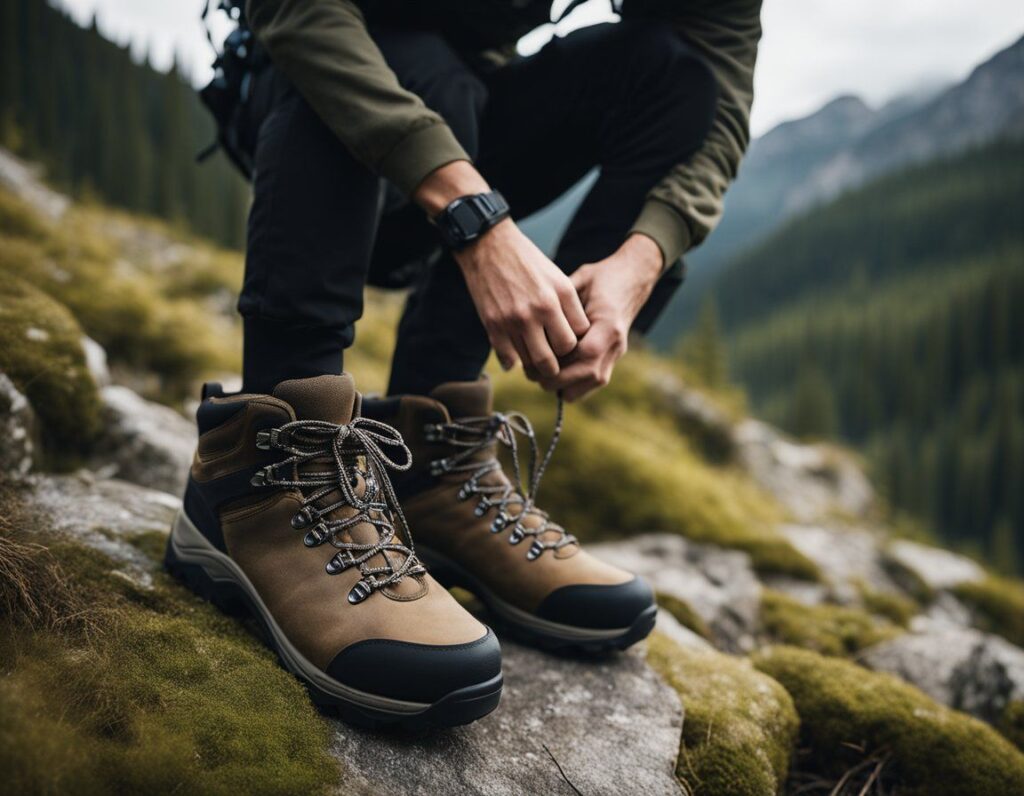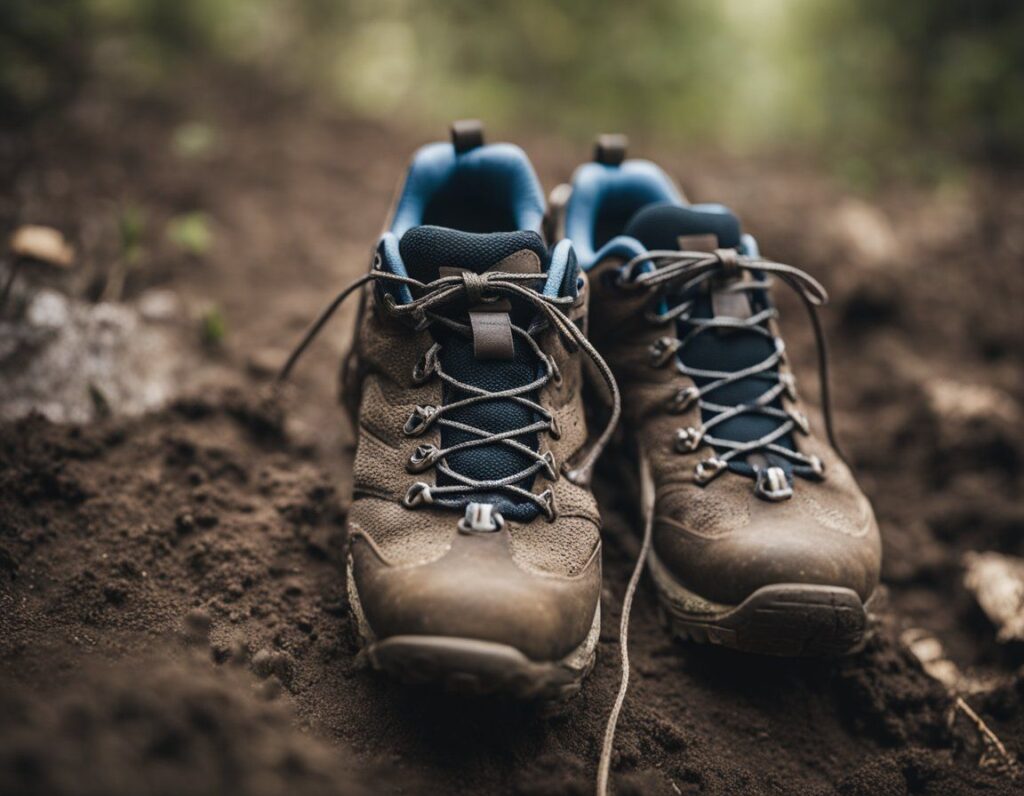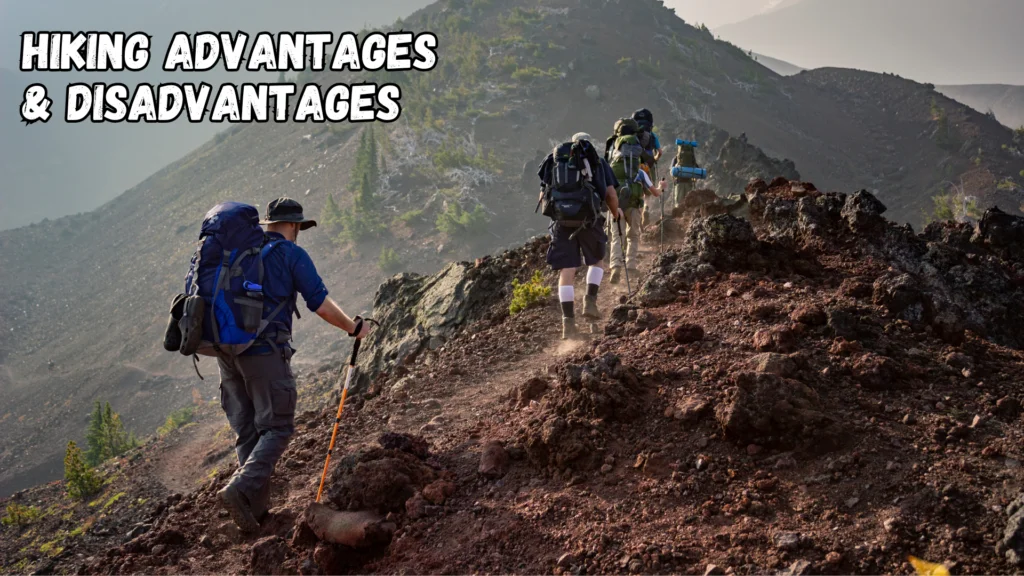Hiking shoes are an essential part of your outdoor gear. They need to be durable and long-lasting.
So, how much mileage should you expect from them? Hiking can be tough on shoes. Trails, rocks, and weather all take a toll. Knowing how long your hiking shoes last is important. It helps you plan and budget for replacements.
This blog post will explore the lifespan of hiking shoes. We will look at factors that affect their durability. You will also get tips to extend the life of your shoes. By the end, you will know what to expect from your hiking footwear. Enjoy your hikes with well-maintained shoes!
Importance Of Knowing Mileage
It helps you gauge when to replace them. This ensures you have the best support and protection on the trail. Worn-out shoes can lead to injuries and discomfort. Keeping track of mileage helps you avoid these issues.
Factors Affecting Mileage
Several factors impact the mileage of hiking shoes. Here are the key ones:
- Material Quality: High-quality materials last longer. They provide better durability.
- Terrain Type: Rough terrains wear out shoes faster. Smooth trails are gentler on shoes.
- Hiking Frequency: Frequent hikers need replacements sooner. Occasional hikers can use shoes longer.
- Maintenance: Proper care extends the life of your shoes. Cleaning and storing them well is vital.
| Factor | Impact on Mileage |
|---|---|
| Material Quality | Higher quality means longer mileage |
| Terrain Type | Rough terrain reduces mileage |
| Hiking Frequency | Frequent use shortens shoe life |
| Maintenance | Good care extends mileage |

Types Of Hiking Shoes
Hiking shoes come in various types to suit different terrains and hiking experiences. Understanding the types of hiking shoes helps you choose the right pair. This ensures comfort, durability, and better performance on trails. Below, we discuss the three main types of hiking shoes: Lightweight Hiking Shoes, Midweight Hiking Shoes, and Heavyweight Hiking Shoes.
Lightweight Hiking Shoes
Lightweight hiking shoes are ideal for short hikes on well-maintained trails. They are often made from breathable materials to keep your feet cool. These shoes provide ample flexibility, making them comfortable for casual hikes.
- Weight: 1-2 pounds per pair
- Material: Mesh, synthetic fabrics
- Best for: Day hikes, easy trails
These shoes offer less ankle support but are perfect for light loads. They usually last around 300-500 miles.
Midweight Hiking Shoes
Midweight hiking shoes are a balance between lightweight and heavyweight options. They offer better support and durability. These shoes are great for longer hikes on moderate terrain.
- Weight: 2-3 pounds per pair
- Material: Leather, durable fabrics
- Best for: Multi-day hikes, varied terrain
Midweight shoes provide good ankle support and can carry heavier loads. They typically last 500-800 miles.

Heavyweight Hiking Shoes
Heavyweight hiking shoes are designed for tough terrains and long backpacking trips. They are built to withstand harsh conditions and heavy loads. These shoes offer maximum support and durability.
- Weight: Over 3 pounds per pair
- Material: Full-grain leather, rugged materials
- Best for: Rough terrain, heavy loads
Heavyweight shoes provide excellent ankle support and protection. They usually last 800-1,000 miles or more.
Material And Construction
When considering how much mileage you should get out of your hiking shoes, the material and construction play crucial roles. Different materials and construction methods directly impact the durability and performance of your footwear. Understanding these components can help you make an informed decision and extend the life of your hiking shoes.
Upper Materials
The upper part of hiking shoes is made from various materials, each offering distinct benefits. Common materials include:
- Leather: Known for durability and support. Full-grain leather is tough but less breathable.
- Synthetic Fabrics: Lightweight and breathable. Typically less durable than leather.
- Mesh: Offers excellent breathability. Often combined with other materials for better structure.
Choosing the right upper material can significantly impact how long your hiking shoes last. Leather tends to last longer but may require more care. Synthetic fabrics are lighter but might wear out faster.
Midsole And Outsole Durability
The midsole and outsole are critical for comfort and durability. The midsole provides cushioning, while the outsole offers traction. Common materials include:
| Material | Benefits | Drawbacks |
|---|---|---|
| EVA (Ethylene Vinyl Acetate) | Lightweight, cushioned | Less durable over time |
| PU (Polyurethane) | Durable, supportive | Heavier, less cushioned |
| Rubber Outsole | Excellent traction, durable | Can be heavy |
For longer hikes, consider shoes with a PU midsole for added durability. A rubber outsole can provide better traction, especially on rough terrain.
Waterproofing And Breathability
Waterproofing and breathability are essential features for hiking shoes. They impact your comfort and the shoe’s lifespan. Key points to consider:
- Waterproof Membranes: Materials like Gore-Tex keep water out but can reduce breathability.
- Water-Resistant Treatments: Offer some protection without compromising breathability.
- Breathable Mesh: Enhances airflow but offers no water protection.
For wet conditions, waterproof membranes are ideal. In dry, hot climates, breathable mesh is more suitable. Balancing these features can help extend the life of your hiking shoes and keep your feet comfortable.

Usage And Terrain Impact
Hiking shoes are a vital part of any hiker’s gear. They support your feet and keep you safe on the trails. But how long do they last? The answer depends on how and where you use them. Let’s explore the impact of usage and terrain on the lifespan of your hiking shoes.
Trail Conditions
The type of trails you hike on can affect your shoes’ mileage. Rocky and uneven terrain can wear out your shoes faster. Sharp rocks can tear the sole and upper material. Soft, smooth trails like forest paths are gentler on your shoes. They can last longer on these trails.
Frequency Of Use
How often you hike plays a big role. Frequent hikers might need new shoes sooner. Occasional hikers can get more mileage out of their shoes. For example:
- Daily hikers: 6-12 months
- Weekly hikers: 1-2 years
- Monthly hikers: 2-3 years
Weather Conditions
Weather affects your hiking shoes too. Wet conditions can shorten their life. Rain and mud can make shoes wear out faster. Dry, warm weather is better for shoe longevity. Extreme weather conditions like snow can also impact your shoes. They may need more frequent replacement in harsh conditions.
Signs Of Wear And Tear
Hiking shoes are an essential part of your outdoor gear. They provide support, comfort, and protection on the trails. But how do you know when it’s time to replace them? Recognizing the signs of wear and tear is crucial. Let’s break down these signs into three main categories: Sole Wear, Upper Fabric Damage, and Cushioning Breakdown.
Sole Wear
The sole is the part of the shoe that takes the most beating. Over time, it will show signs of wear. Check the tread pattern. If it’s worn down or smooth, your grip will suffer. This can lead to slips and falls. Also, look for cracks or splits in the rubber. These indicate that the sole is breaking down. A worn sole means it’s time for new shoes.
Upper Fabric Damage
The upper part of the shoe is made from fabric, leather, or synthetic materials. This part protects your feet and keeps them secure. Look for tears, holes, or frayed stitching. These can compromise the shoe’s integrity. Water and debris can enter through these openings. Also, check if the fabric has lost its structure. A flimsy upper means less support for your feet.
Cushioning Breakdown
Cushioning provides comfort and absorbs impact as you hike. Over time, it can compress and lose its effectiveness. Check the midsole for signs of compression. If it feels flat or hard, the cushioning is likely worn out. Press on the midsole with your thumb. If it doesn’t spring back, it’s time to replace your shoes. Good cushioning is vital for long hikes and rough terrains.
Extending The Life Of Your Hiking Shoes
Proper care extends the life of your hiking shoes. This ensures you get the most out of your investment. Below are some tips to help you maintain them.
Proper Cleaning
Regular cleaning prevents dirt and grime buildup. This can damage the materials. Here’s how to clean your hiking shoes:
- Remove the laces and insoles.
- Brush off loose dirt with a soft brush.
- Use a mild soap and water to scrub the exterior.
- Rinse thoroughly and let them air dry.
Remember to avoid harsh chemicals. These can damage the shoe material.
Correct Storage
Storing your hiking shoes properly is crucial. It prevents unnecessary wear and tear. Follow these steps for correct storage:
- Keep them in a cool, dry place.
- Avoid direct sunlight.
- Use shoe trees to maintain shape.
- Store them in a breathable bag.
Avoid storing them in damp or humid areas. This promotes mold growth.
Timely Repairs
Addressing minor issues early prevents bigger problems. Here’s how to handle timely repairs:
- Check for loose stitching regularly.
- Repair or replace worn-out laces.
- Fix minor sole separations with shoe glue.
- Replace insoles when they lose cushioning.
Don’t wait for small issues to become major repairs. Regular checks keep your shoes in top condition.
When To Replace Your Hiking Shoes
Hiking shoes are essential for outdoor adventures. They provide comfort and support on rough terrains. But, how do you know when it’s time to replace them? Let’s explore the signs.
Mileage Benchmarks
Most hiking shoes last between 300 to 500 miles. This range depends on the terrain and the shoe quality. For regular trails, 300 miles may be enough. Rocky paths might reduce this lifespan.
Keep track of your hikes. Use a journal or app to note the distance. This helps you monitor your shoes’ mileage. Once you reach 300 miles, start inspecting your shoes often.
Comfort And Support Decline
Notice any discomfort? Your shoes might be losing their support. Worn-out insoles cause pain in your feet and legs. This is a clear sign to replace them.
Check the fit. Do your shoes feel loose or tight? Hiking shoes should fit snugly but not too tight. A poor fit can lead to blisters and injuries.
Structural Integrity
Inspect the shoe’s structure. Look at the soles, uppers, and seams. Are there any cracks or holes? These indicate that your shoes are worn out.
Examine the tread. Good traction is crucial for hiking. If the tread is smooth, replace your shoes. Worn tread can lead to slips and falls.
| Sign | Description |
|---|---|
| Mileage | 300-500 miles |
| Comfort | Pain or poor fit |
| Structure | Cracks, holes, worn tread |
Regularly checking your hiking shoes ensures a safe and enjoyable experience. Replace them when you see these signs. Happy hiking!
Expert Tips For Maximizing Mileage
Getting the most out of your hiking shoes requires some expert advice. By following these tips, you can extend the mileage of your hiking footwear. From choosing the right shoe to regular maintenance, these strategies will keep your feet comfortable and your shoes in top shape.
Choosing The Right Shoe
Start by selecting hiking shoes that match your hiking style. Light hikers will need different shoes than those on rugged trails. Ensure the shoe fits well. An ill-fitting shoe can wear out quickly and cause discomfort.
- Trail Type: Match the shoe to the terrain.
- Fit: Make sure there’s enough space for your toes.
- Material: Choose durable materials like leather or synthetics.
Rotating Between Pairs
Rotating between multiple pairs of hiking shoes can help extend their life. Give each pair time to dry and recover between hikes.
- Have at least two pairs of hiking shoes.
- Use one pair for dry conditions and another for wet weather.
- Alternate shoes to reduce wear and tear.
Regular Maintenance
Maintain your hiking shoes regularly to maximize their mileage. Clean them after each hike to remove dirt and debris.
- Cleaning: Use a brush to remove dirt and mud.
- Drying: Let them air dry; avoid direct heat.
- Inspection: Regularly check for signs of wear and tear.
By following these expert tips, you can significantly extend the life of your hiking shoes, ensuring a comfortable and enjoyable hiking experience.
Choosing the right hiking shoes ensures they last longer. Regular maintenance helps too. Keep an eye on wear and tear. Replace them when needed. Comfort and safety come first. Happy hiking!
FAQs:
How Long Do Hiking Shoes Last?
Hiking shoes typically last between 500 to 1,000 miles. This depends on the terrain and usage. Regular maintenance can extend their life.
What Affects Hiking Shoe Mileage?
Terrain, usage frequency, and shoe quality impact mileage. Rough terrains wear shoes faster. Proper care helps maximize their lifespan.
How Can I Extend My Hiking Shoes’ Life?
Clean them regularly and dry properly after use. Store in a cool, dry place. Rotate pairs if possible.
When Should I Replace My Hiking Shoes?
Replace them when you notice significant wear or discomfort. Lack of grip and cushioning are key indicators.


